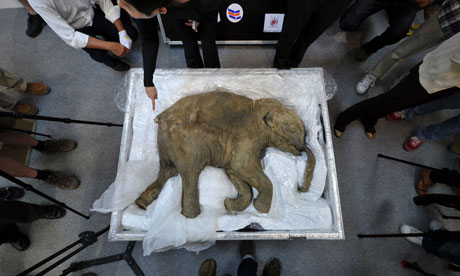Detroit’s bankruptcy petition last week was far from a surprise, but
what should be noted is that it is the first of what will likely be a
major wave of municipalities and states that will follow behind.
Specifically, President Obama’s home state of Illinois.
Many wonder why Detroit waited so long to declare bankruptcy. It has been years in the making. Detroit’s $18 billion of debt is just the latest in a downward spiral of bad news coming from a deeply troubled city. Fully half of its debt stems from unaffordable pensions, health care and retirement benefits. By now everyone has read about the awful condition of the city: unemployment double the nation and the highest violent crime rate of any large U.S. city, not to mention 4 out of every 10 street lights out of commission. Detroit literally can’t afford to keep the lights on or pay its bills.
Plagued by a history of bad decisions, Detroit’s city leaders perpetuated some of the mistakes the automakers made instead of learning from them. Government growth was fueled not by new tax revenues, but by future promises to its copious amount of municipal workers. At the same time, the city pursued an anti-growth agenda through tax increases, expanded regulation and abysmal services. No wonder families and businesses fled, taking their tax dollars and payrolls with them.
This is tragic for the Motor City, but this kind of financial trouble won’t end here. Detroit is just one of many local and state governments that are broke. Next in line: Illinois.
Many wonder why Detroit waited so long to declare bankruptcy. It has been years in the making. Detroit’s $18 billion of debt is just the latest in a downward spiral of bad news coming from a deeply troubled city. Fully half of its debt stems from unaffordable pensions, health care and retirement benefits. By now everyone has read about the awful condition of the city: unemployment double the nation and the highest violent crime rate of any large U.S. city, not to mention 4 out of every 10 street lights out of commission. Detroit literally can’t afford to keep the lights on or pay its bills.
Plagued by a history of bad decisions, Detroit’s city leaders perpetuated some of the mistakes the automakers made instead of learning from them. Government growth was fueled not by new tax revenues, but by future promises to its copious amount of municipal workers. At the same time, the city pursued an anti-growth agenda through tax increases, expanded regulation and abysmal services. No wonder families and businesses fled, taking their tax dollars and payrolls with them.
This is tragic for the Motor City, but this kind of financial trouble won’t end here. Detroit is just one of many local and state governments that are broke. Next in line: Illinois.
Unlike Detroit, changes in the manufacturing industry will not
contribute to the demise of the Land of Lincoln. Rather, the profligacy
and complacency of its leaders may.
It is no secret that Illinois is in debt; the state’s Comptroller estimates it to be approximately $160 billion. Nearly $100 billion of this stems, like Detroit, from unfunded pension costs.
Recently, Taxpayers United President Jim Tobin explained that without pension reforms Illinois will be pushed to the brink. According to Tobin, it is likely to happen in less than two years. So why won’t the State Legislators do something to reverse this downward spiral?
Governor Quinn and state lawmakers present and past have promised more benefits to retired teachers, state employees, and other government workers over the years. Rather than tackling reforming the pension programs, Governor Quinn and the legislature pushed for a 67 percent income tax hike on the people of Illinois and a 46 percent increase on businesses – Illinois’ job creators. This drove many companies, such as sandwich king Jimmy Johns, to leave the state entirely. So, less revenue and fewer taxpayers will be around to fund the state’s pension program. Sounds like Detroit.
While pensions inflict grave fiscal troubles on many state and local governments, it is not Illinois’ only problem. According to The American Legislative Executive Counsel’s (ALEC) 2013 Rich States Poor States, Illinois just became the second state to settle charges of securities fraud with the Securities and Exchange Commission (SEC) for misleading bond investors by only making partial payments to its pension funds. For nearly 20 years! Further, Fitch Rating services downgraded Illinois’ credit rating in June, noting “failure to achieve reform measures exacerbates concerns about management’s willingness to address the state’s fiscal challenges.”
The writing is on the wall for President Obama’s home state. “If we follow along the current path, we know we will confront two stark choices: Either the city’s pension payments will squeeze its ability to offer the essential services that you provide, or each of our pension funds will go bankrupt, leaving you and your families without retirement security.” No, not Mayor of Detroit, this was Chicago Mayor Rahm Emanuel addressing Chicago’s city workers.
Lawmakers from Detroit to Chicago to Springfield should heed these words.
Originally appeared in Illinois Review








It is no secret that Illinois is in debt; the state’s Comptroller estimates it to be approximately $160 billion. Nearly $100 billion of this stems, like Detroit, from unfunded pension costs.
Recently, Taxpayers United President Jim Tobin explained that without pension reforms Illinois will be pushed to the brink. According to Tobin, it is likely to happen in less than two years. So why won’t the State Legislators do something to reverse this downward spiral?
Governor Quinn and state lawmakers present and past have promised more benefits to retired teachers, state employees, and other government workers over the years. Rather than tackling reforming the pension programs, Governor Quinn and the legislature pushed for a 67 percent income tax hike on the people of Illinois and a 46 percent increase on businesses – Illinois’ job creators. This drove many companies, such as sandwich king Jimmy Johns, to leave the state entirely. So, less revenue and fewer taxpayers will be around to fund the state’s pension program. Sounds like Detroit.
While pensions inflict grave fiscal troubles on many state and local governments, it is not Illinois’ only problem. According to The American Legislative Executive Counsel’s (ALEC) 2013 Rich States Poor States, Illinois just became the second state to settle charges of securities fraud with the Securities and Exchange Commission (SEC) for misleading bond investors by only making partial payments to its pension funds. For nearly 20 years! Further, Fitch Rating services downgraded Illinois’ credit rating in June, noting “failure to achieve reform measures exacerbates concerns about management’s willingness to address the state’s fiscal challenges.”
The writing is on the wall for President Obama’s home state. “If we follow along the current path, we know we will confront two stark choices: Either the city’s pension payments will squeeze its ability to offer the essential services that you provide, or each of our pension funds will go bankrupt, leaving you and your families without retirement security.” No, not Mayor of Detroit, this was Chicago Mayor Rahm Emanuel addressing Chicago’s city workers.
Lawmakers from Detroit to Chicago to Springfield should heed these words.
Originally appeared in Illinois Review





















